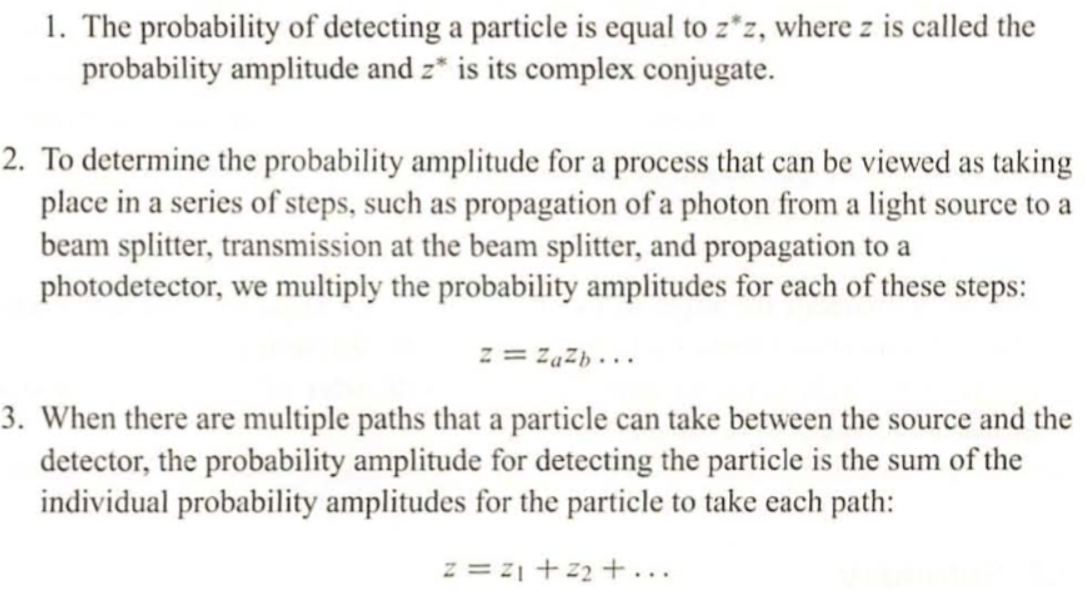Find the probability of detecting a photon if the probability amplitude is as provided in the first image. (Hint: See the second attatched image for more on finding the probability amplitude)
Find the probability of detecting a photon if the probability amplitude is as provided in the first image. (Hint: See the second attatched image for more on finding the probability amplitude)
Algebra: Structure And Method, Book 1
(REV)00th Edition
ISBN:9780395977224
Author:Richard G. Brown, Mary P. Dolciani, Robert H. Sorgenfrey, William L. Cole
Publisher:Richard G. Brown, Mary P. Dolciani, Robert H. Sorgenfrey, William L. Cole
Chapter8: Introduction To Functions
Section8.5: Determining An Equation Of A Line
Problem 7MRE
Related questions
Question
Find the probability of detecting a photon if the probability amplitude is as provided in the first image.
(Hint: See the second attatched image for more on finding the probability amplitude)

Transcribed Image Text:1
1 + i
+i

Transcribed Image Text:1. The probability of detecting a particle is equal to z*z, where z is called the
probability amplitude and z* is its complex conjugate.
2. To determine the probability amplitude for a process that can be viewed as taking
place in a series of steps, such as propagation of a photon from a light source to a
beam splitter, transmission at the beam splitter, and propagation to a
photodetector, we multiply the probability amplitudes for each of these steps:
z = Zazb...
3. When there are multiple paths that a particle can take between the source and the
detector, the probability amplitude for detecting the particle is the sum of the
individual probability amplitudes for the particle to take each path:
z = 2₁ +22+...
Expert Solution
This question has been solved!
Explore an expertly crafted, step-by-step solution for a thorough understanding of key concepts.
Step by step
Solved in 3 steps with 3 images

Recommended textbooks for you

Algebra: Structure And Method, Book 1
Algebra
ISBN:
9780395977224
Author:
Richard G. Brown, Mary P. Dolciani, Robert H. Sorgenfrey, William L. Cole
Publisher:
McDougal Littell

Algebra & Trigonometry with Analytic Geometry
Algebra
ISBN:
9781133382119
Author:
Swokowski
Publisher:
Cengage

Algebra: Structure And Method, Book 1
Algebra
ISBN:
9780395977224
Author:
Richard G. Brown, Mary P. Dolciani, Robert H. Sorgenfrey, William L. Cole
Publisher:
McDougal Littell

Algebra & Trigonometry with Analytic Geometry
Algebra
ISBN:
9781133382119
Author:
Swokowski
Publisher:
Cengage